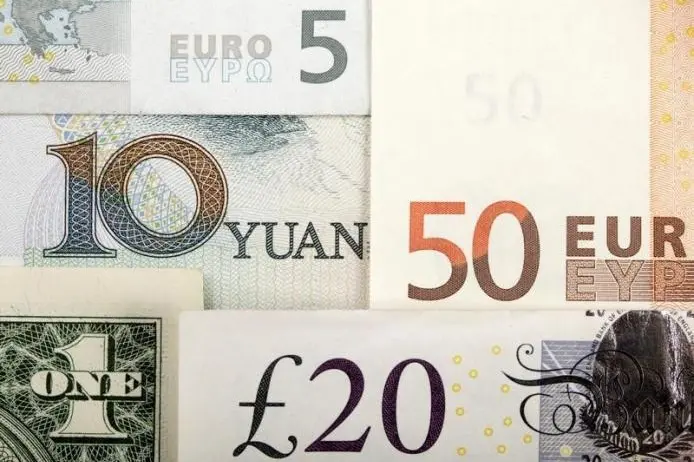PHOTO
NEW YORK - An unusual calm enveloping foreign exchange markets is extending the life of a lucrative trade beyond what many had expected.
The so-called carry trade, which involves borrowing in a low interest-rate currency to invest in a higher-yielding currency, had been expected to fade as major central banks pivot away from hiking rates toward easing policy.
However, a major shift has yet to happen, keeping currency markets calm and the trade, which relies on such stability, an easy winner.
"The carry trade is often known as picking up nickels in front of steam rollers, but speculators have been picking up bundles of $100 bills over the last year," said Karl Schamotta, chief market strategist at payments company Corpay.
"The returns are outstripping virtually everything else."
The strategy provided bumper returns for those who played it right, a Corpay Global Payments analysis showed. Buyers of the high-yielding Mexican peso who sold the Japanese yen would have reaped gains of about 44% over the last 12 months. Other popular carry currencies have also yielded similarly outsized returns.
A Deutsche Bank index, with elements that include the carry performance of 21 emerging market currencies, rose 6.6% in 2023, its best year since 2017. The DB EM FC Equally Weighted Total Return index, as it is called, has climbed nearly 1% over the last month.
The tide may be turning, however. Retreating inflation in emerging markets paves the way for central banks to ease policy in 2024, narrowing the rate difference between the highest- and lowest-yielding currencies.
Mexico recently joined Brazil, Chile and Colombia in cutting rates, easing for the first time since it began tightening in mid-2021.
"The carry trade is likely to run out of steam and while these currencies could see some further gains, those tailwinds that propelled them to large gains in 2023 look to have run their course," said Jonathan Petersen, senior markets economist at Capital Economics.
Last week, Fed policymakers indicated they still expect to reduce rates by three-quarters of a percentage point by the end of 2024. However, the Fed and the European Central Bank are unlikely to match the scale and speed of easing in emerging markets.
Carry traders need to be more picky as a result, said Aaron Hurd, senior portfolio manager, currency, at State Street Global Advisors.
"It's not quite an all clear environment that you had over the past year and a half," he said. "We're generally moving in the direction of being more cautious ..., trying to take the higher quality or lower-risk carry trades now."
Hurd is shifting from using the yen as a funding currency, saying it is vulnerable to a sharp move, toward the stable Swiss franc. He favors buying the Indian rupee while selling the Chinese yuan.
VOLATILITY IS KEY
Central banks moving in sync has helped to curb interest rate volatility. Deutsche Bank's CVIX index, a weighted average of expected volatility in nine major currency pairs, recently sank to a near 2-1/2 year low.
That means investors are not ready to abandon carry trades soon.
"I think markets expected January or February to be more volatile months, where we would have seen a decline in U.S. data that would have warranted maybe Fed rate cuts already in March or in May," said Francesco Pesole, forex strategist at ING in London. Instead, there were two months of strong U.S. data, he noted.
"We can definitely see another few weeks where carry remains relatively popular," Pesole said.
Despite notable interest rate moves in the last few weeks, including a surprise a cut by the Swiss National Bank and the Bank of Japan's long-awaited move away from negative interest rates, volatility has stayed low.
Three-month dollar/yen implied volatility, a measure of the cost of options contracts that traders use to hedge positions, is near its lowest in about three months.
However, it would not take much to roil markets and unsettle the carry trade, analysts said.
"It's really hard to imagine things getting even calmer in FX markets," Capital Economics' Petersen said.
Surprises could come from central bank policy actions, economic data, geopolitical upheavals and elections around the world this year, including in the U.S., he noted.
"The bottom line is that the bar is very low for volatility to creep higher from here."
(Reporting by Saqib Iqbal Ahmed; Additional reporting by Laura Matthews; Editing by Megan Davies and Richard Chang)























